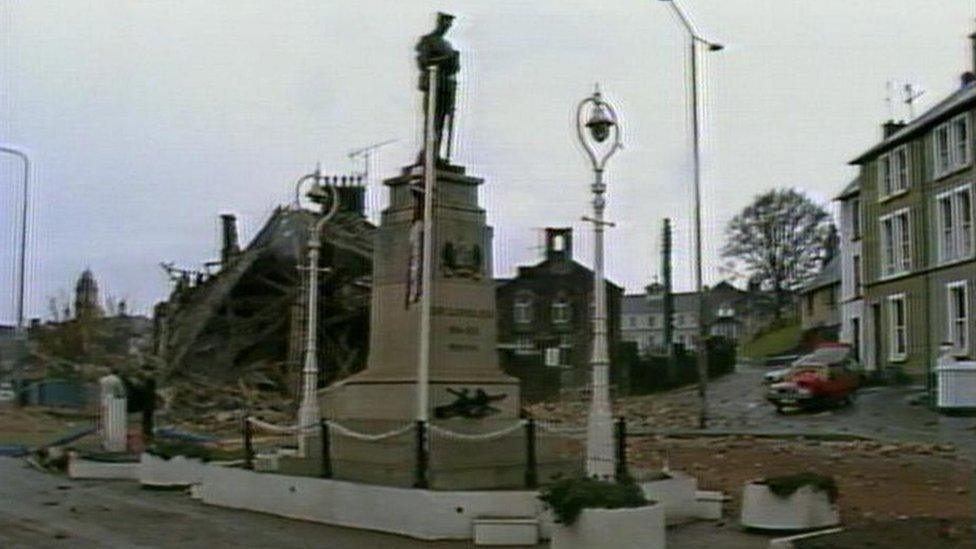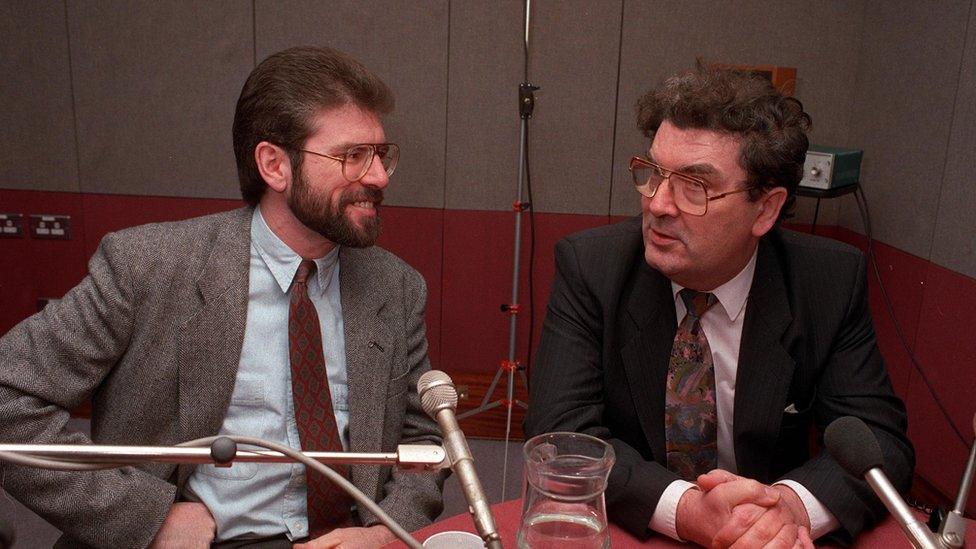NI state papers: What happened in 1988?
- Published

The Remembrance Day bombing in Enniskillen in November 1987 set a tone for the following year
As the Public Record Office in Belfast releases 620 confidential state files from 1988 and earlier, Northern Ireland historian Éamon Phoenix looks back on that year's events.
The year 1988 opened in the wake of the IRA bombing of Remembrance Day in Enniskillen in November 1987 when 11 people were killed.
On 11 January, news broke that SDLP leader John Hume had held the first of a series of meetings with Sinn Féin president Gerry Adams.
Two events later that month angered nationalists in Northern Ireland and the Irish government led by Charles J Haughey.
On 25 January, British attorney general Sir Patrick Mayhew announced that 11 Royal Ulster Constabulary (RUC) officers named in the Stalker-Sampson 'shoot-to-kill' investigation would not be prosecuted.

News broke of talks between Sinn Féin president Gerry Adams and the SDLP leader John Hume
He cited reasons of "national security".
This anger deepened when senior British police chief John Stalker claimed he had been removed from the inquiry because he had found evidence that RUC men had shot dead six unarmed republicans in County Armagh 1982 and then instigated a cover-up.
On 28 January, the Court of Appeal in London rejected the Birmingham Six's appeal against their convictions.
Irish ministers attacked both these decisions as a breach of the Anglo-Irish Agreement at two meetings with Northern Ireland Secretary Tom King.
Newly released state papers from 1988 show that the Soviet Union raised the cases of paramilitary prisoners with the British government.
On 16 March, three unarmed IRA members were shot dead in Gibraltar by undercover soldiers.
Their funerals in Milltown Cemetery ten days later were attacked by loyalist Michael Stone, who killed three men.
The cycle of death continued.
Just three days later, two undercover British soldiers inexplicably drove into the path of the west Belfast funeral procession of Kevin Brady, an IRA victim of Stone's attack.
They were beaten, stripped and shot dead to universal horror.

Loyalist Michael Stone attacked a funeral at Milltown cemetery in west Belfast, killing three men
The early summer saw an escalation of IRA attacks at home and abroad.
On 6 June, soldiers taking part in a fun run in Lisburn, County Antrim, were killed in an IRA explosion, and on 8 August soldiers were killed by a landmine in County Tyrone.
The Ulster Volunteer Force, a loyalist paramilitary group, shot dead three Catholics in a Belfast bar in May, while a family of three was killed by an IRA bomb in Newry, County Down, that was intended for the security forces.
The year saw moves by the British Government, under pressure from the MacBride Principles campaign in the United States and the Irish government, to tackle discrimination in jobs.

Army corporals David Howes and Derek Wood were murdered after they drove into the path of the funeral of an IRA man
In October 1988, London imposed a broadcasting ban on direct statements by representatives of Sinn Féin and the loyalist Ulster Defence Association.
The year saw the continued decline of Northern Ireland's industrial base with unemployment reaching 18%.
In 1988, 94 people were killed in the Northern Ireland Troubles.